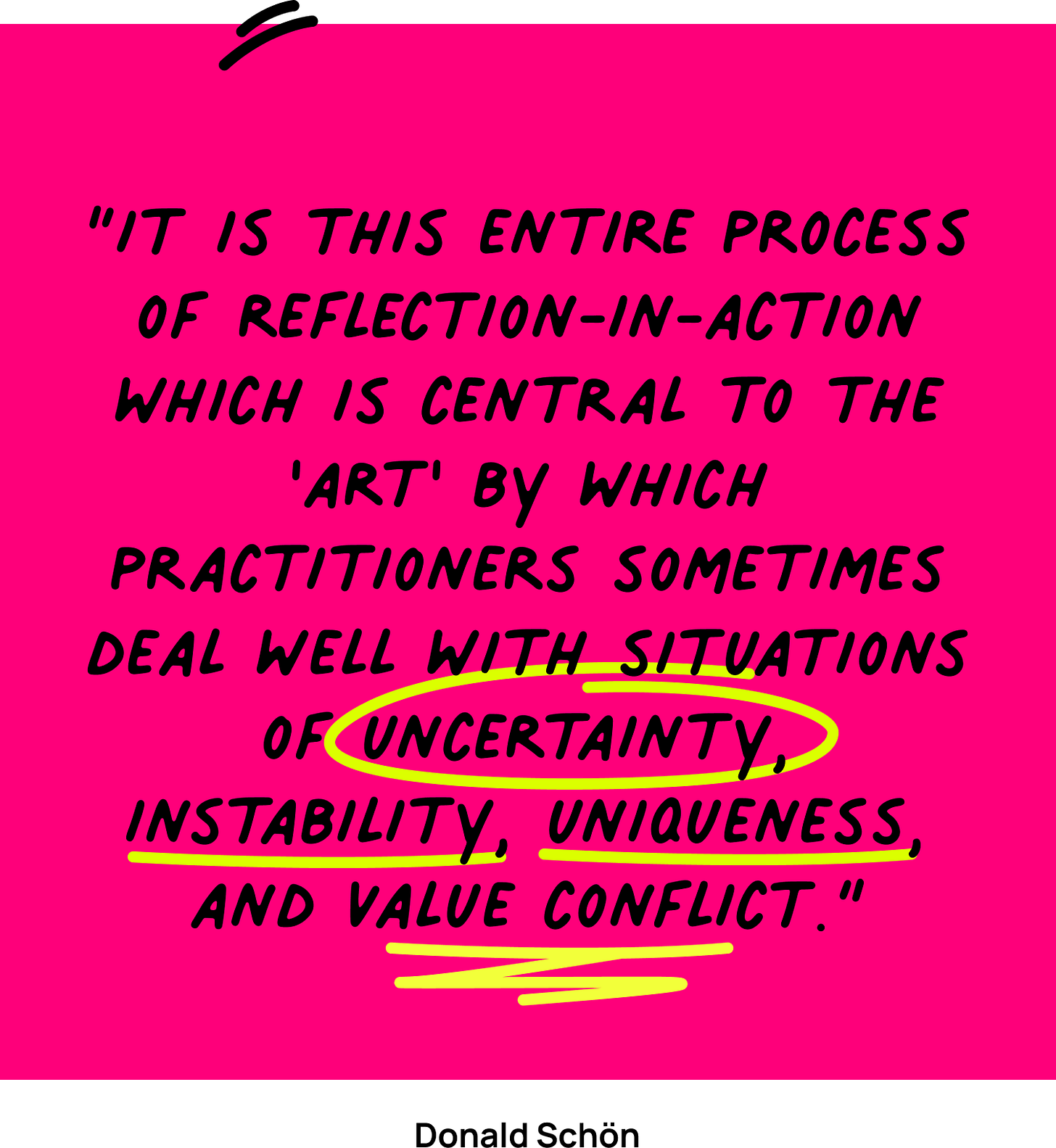Stickies #5: These design skills are rarely discussed
No yiddi-yadda, no mumbo-jumbo. I genuinely want to talk more about these topics.
The quest to understand what makes designers great—what skills and qualities set them apart, has led me to topics that are rarely discussed.
I looked into design bootcamps and courses, and these skills don’t seem to get much attention.
Even when I found articles about them, they didn’t get many claps.
I get why—these are cognitive skills, like sensemaking and reflection-in-action practice, that feel more abstract. In contrast, skills like prototyping, UI/visual design, and even topics like growth and the psychology of design are more tangible and easier to grasp, you can apply it straight away.
Yet, when I was Head of Design and led Learning and Development for a design organization, I found that the real issues weren’t about UI, visual design, or interaction design. The common struggles were a lack of strong rationale, weak connections between problems and solutions, and a general sense that things weren’t coming together in a thoughtful, thorough way.
I genuinely want to normalize the discussion around these skills.
Maybe it won’t get a ton of likes, but it’s essential—especially now, with AI driving a tectonic shift in our industry. While AI has immense potential, it lacks true comprehension1, sense-making2, and self-awareness3—core aspects of how the human mind processes information, thinks critically, and connects ideas.
And that’s exactly why human agency will always matter.
Design Buddy is a free publication supported by readers like you. Subscribe to have my next post delivered directly to your inbox.
#1 Sense-making
How many times have you been in a situation where what you’re working on doesn’t seem clear—ambiguous, lacking data?
Oh a lot of times for me! Makes me want to throw myself at a wall.
Imagine you are solving a puzzle without seeing the full picture on the box. The situation feels unclear, and the pieces don’t seem to fit together at first. But you keep looking at them, turning them around, and trying different combinations until you start to see how they might connect.
Sense-making is about finding connections in what initially feels scattered or chaotic—piecing it together step by step to create a clearer understanding of what you're building.4
#2 Reflection-in-Action
Seeing those jigsaw pieces without knowing the full picture puts you in these situations:
Uncertainty.
Instability.
Uniqueness.
The value of conflict.
So how do we navigate these situations?
By continuously reflecting while designing—or as Donald Schön calls it, "reflection in action."5 Thinking and acting at the same time. It happens when you’re in the middle of doing something and pause to think about what you're doing, why you're doing it, and whether it’s working. It’s like “thinking on your feet” or “learning by doing,” where you adjust your actions based on what you observe.
I always have doubts during the process. I used to think uncertainty was bad—I just wanted to get out of it as quickly as possible.
But looking back, I realize how often I neglected the reflective dialogue within me.
Turns out, doubt is actually a beacon to my curiosity, guiding me to explore and experiment instead of rushing toward a solution that seems good at first but lacks depth and thoughtfulness.
#3 Navigating Ambiguity
Beyond reflection-in-action, being a good wayfinder in ambiguous situations requires continuously balancing action and adaptation.
Sometimes you move fast, sometimes you move slow. Sometimes you need to zoom out to grasp the big picture, or zoom in to focus on details and work within constraints. At times, you follow the course, but you also need to stay open to creating your own path.6
The higher you climb the senior ladder, the less you’ll be spoon-fed. And being a wayfinder will be the quality your team needs from you the most.
Bonus exercise: Buy a brand-new puzzle and build it without looking at the box. 😁
Until next week,
Thomas
If you find any of these links broken, please let me know. Thank you!
You can show your support by clicking the heart button ❤️ or sharing this with a friend, colleague, or fellow designer! It helps me spread this newsletter and reach more people. Thank you!
I welcome any discussion below and will respond to all of them—my goal is to have a meaningful conversation. Feel free to share your thoughts and experiences!








